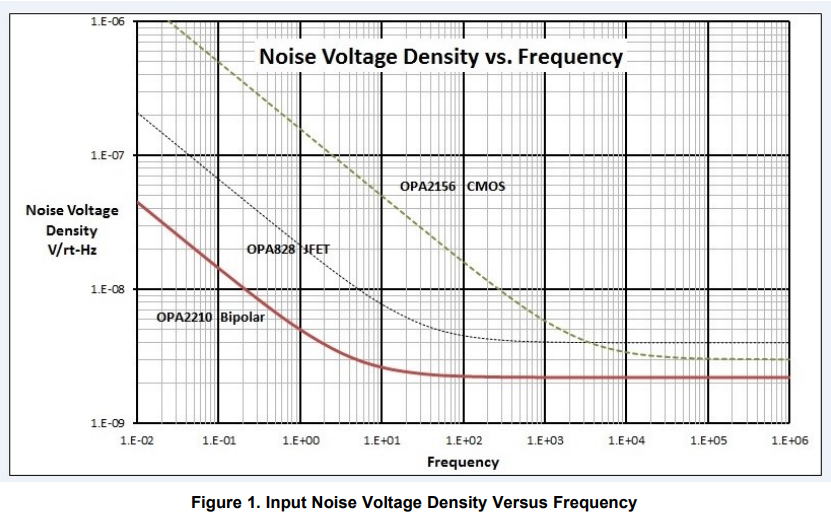Other Parts Discussed in Thread: OP07
Hi,
1. the data is as below, why?
the Input voltage noise density at 1kHz input voltage noise
OPA627 5.2nV/sqrt(Hz) 0.6uV
OP07 9.8nV/sqrt(Hz) 0.38uV
2. Besides, can we use the Input voltage noise density to calculate input voltage noise?




